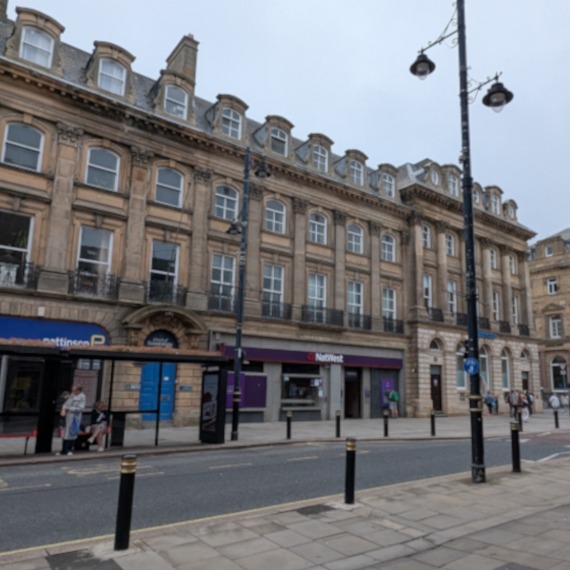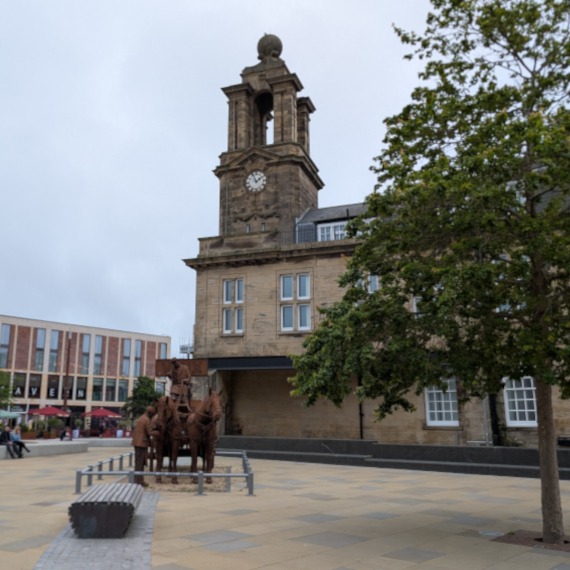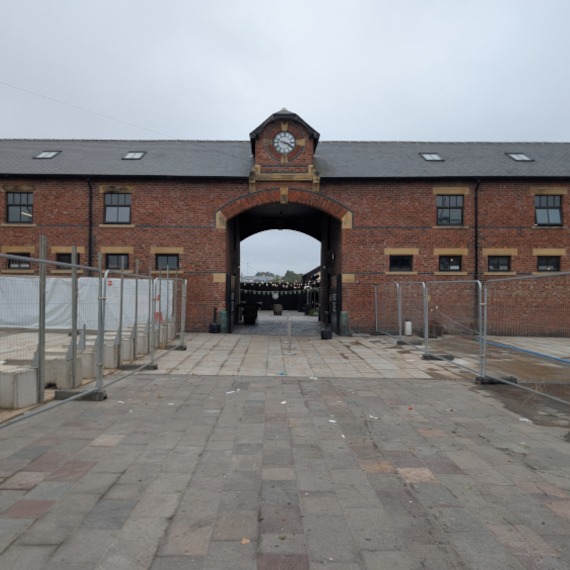
12 Nov Sunderland: Tackling regeneration on a grand scale
Sunderland is undergoing a vast city-wide regeneration programme, and The Assembly Line founder Diane Cunningham went to see what is happening on a recent trip to the North East.
The focus is on creating a dynamic, healthy, and vibrant city, with the aim of transforming the historic city centre, expanding job opportunities, improving infrastructure, and delivering sustainable housing and public spaces.
How is this long-term, ambitious regeneration project being delivered, and what could other places learn?
The plan
Plans for Sunderland include doubling the city centre’s resident population by building 1,000 new homes, delivering employment space that will create 8,000-10,000 jobs, enhancing culture, leisure and community, as well as delivering new green spaces.
Completion is anticipated to extend over the next decade, though major phases and prominent new infrastructure will be delivered progressively starting this year.
At the moment, the city centre is a mix of development activity and inactivity, including empty shops, but there is recognition that regeneration can’t all happen at once.
There are many different areas within the city, and they aren’t particularly linked. There is the historic bit (Sunniside), a very tired and about to be closed leisure park, a high vacancy retail area where Wilko etc have closed, but, in the same area, a buoyant library and winter garden. Then there are newly developed areas such as Keel Square, and, across multiple lanes of traffic, there is the stadium and Sheeplands. This area is now connected via a new pedestrian bridge, which helps.


The key regeneration challenges
Sunderland is similar in size to Newcastle, so the scale of regeneration and knitting it all together is an obvious challenge.
It’s also a seaside town, but you wouldn’t know it, as it’s very disconnected. Good wayfinding will be necessary to navigate around the development underway, and then after the work is finished.
Depending on where you enter the city – Metro, from the coast, bus or train – you get a very different impression, from derelict and under development to shiny new and finished.
Regional connections could be better; for example, public transport from Sunderland to Newcastle and from Sunderland to Durham is slow.
The city centre is 2-5 years away from having the space retailers want because of the order in which projects are being carried out. The retail core has a high vacancy rate (21%), but it feels much higher because the empty units are clustered in one area and are sizable.
However, among the empty premises are some grand buildings, such as former banks and department stores.
How Sunderland’s regeneration is being delivered
The 10-year regeneration plan has been broken down into 3-year chunks, with the retail core being tackled last.
This approach came about due to having a strong board and the good working relationship between CEO Patrick Melia and Executive Director of City Development, Peter McIntyre. There was a mutual understanding that not everything could be undertaken at once.
Patrick Melia has also been around the city for a long time and is well-connected with the main players, which is key in bringing everyone together.
The city has also successfully brought in new uses to replace old industries, such as the long-established Nissan car manufacturing plant. It’s something that can be built on. The Stadium of Light (home to Sunderland AFC) hosts music events and other sports events, such as the Women’s Rugby World Cup opener.
There are also two BIDs which are playing a key role. One focuses on the city centre while the other focuses on the seaside. The latter is unusual in that it includes community reps, not just businesses, but that means buy-in from all, particularly the large resident population.
Tackling the retail core is arguably the most challenging part of the regeneration.
Partners have been secured for other projects, and as they are delivered and bring activity and focus, they may help with revitalising the retail core.
What development is happening in Sunderland?
A 32-ha site under development with a mix of homes, employment, hotel, leisure and cultural uses. A number of developments have already been completed, including The Fire Station music and entertainment venue, new offices and the conversion of Grade II listed railway stables into bars, restaurants and live entertainment space.
Formative public realm projects include Keel Square, where a former roundabout has been transformed into a pedestrianised area with fountains, art installations and street furniture linking to Sheepfolds Stables development next to the Stadium of Light over the new footbridge.
Schemes underway include Culture House, which will house a library, multifunctional event and exhibition space, café and roof garden and an eye hospital.
Vistry Group has been appointed as the preferred developer for the Sheepfolds neighbourhood, which will be the most populous of the four residential communities being developed at Riverside.


On the eastern side of the city centre, Sunniside is a confused area of Georgian properties and a square, among which there is service provision for vulnerable people. The businesses here aren’t public-facing, so it is quiet, but the architecture and feel of what this area must have been like historically are felt strongly.
The overarching aim is to create a safe and active neighbourhood, intensify its uses and population, and generate a strong sense of purpose.
Mackies Corner, an historic building filled with independent businesses provides a good landmark for this side of the city centre while, architect, Gerorge Clarke has recently submitted a planning app to create a cultural bookshop, cafe and flexible event space in, what is, his home town.


The council chose Capital and Centric in September 2025 to create a mixed-use neighbourhood of homes, workspaces, cafés and bars. There will be a strong focus on green spaces, walkability and places to dwell. It will also connect with Sunniside, bringing this area into the core city centre.
Lessons for other places
The key lesson from Sunderland’s approach and regeneration success so far is the importance of good leadership (that know the city and its stakeholders), having the right delivery partners and being realistic about the number of sites which can be developed at the same time.
This is part of a series of posts from the North East, a region quietly getting on with large regen projects which we discovered during a recent visit.
Return here to find further discussion over the next few weeks.

